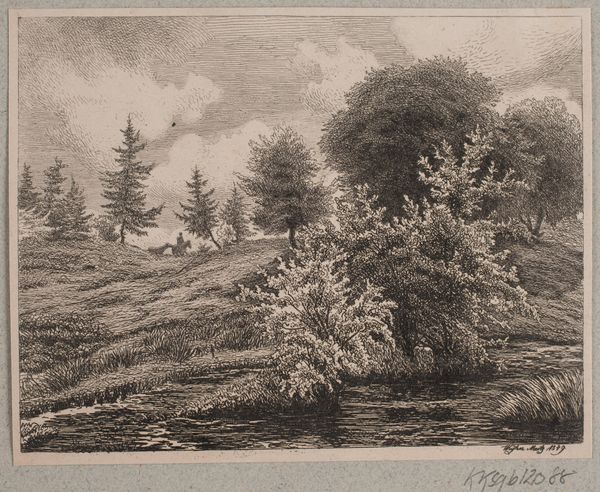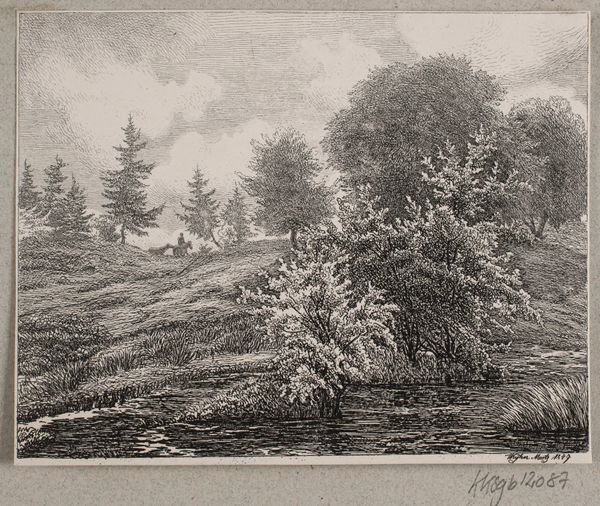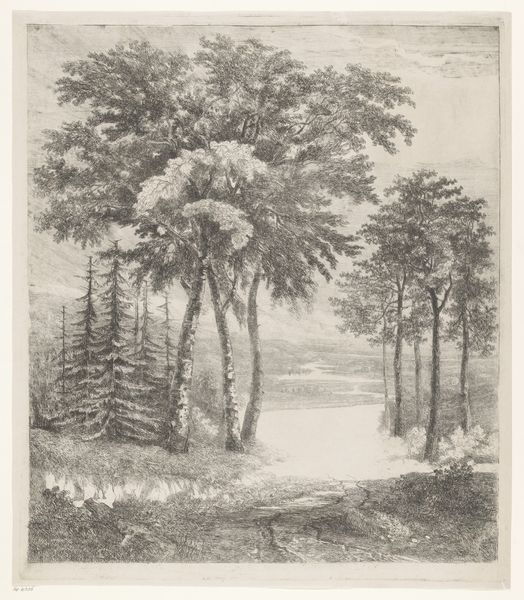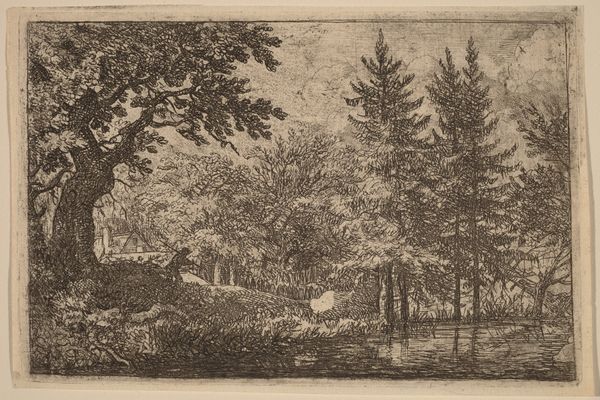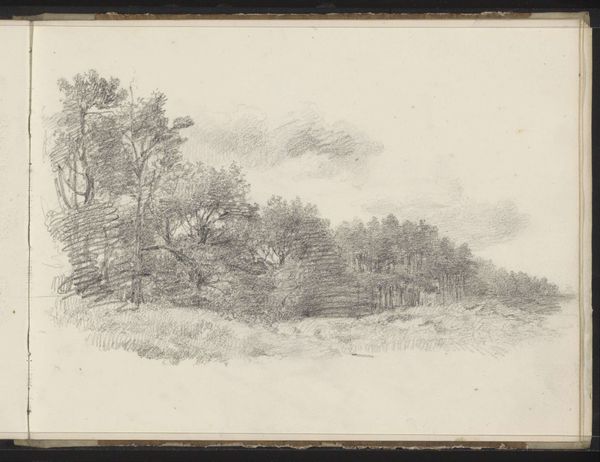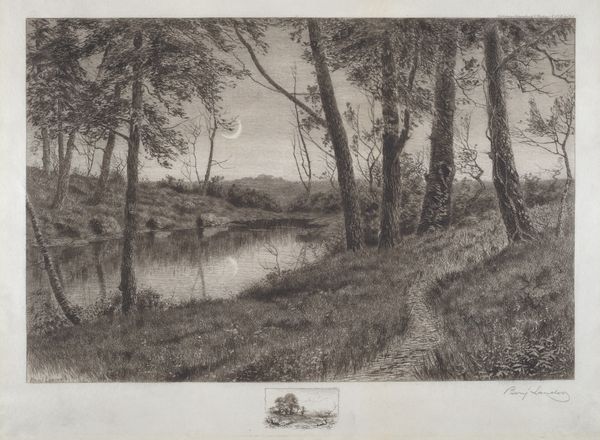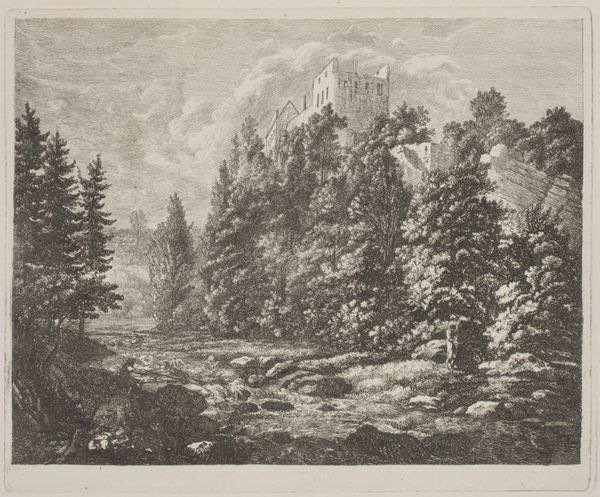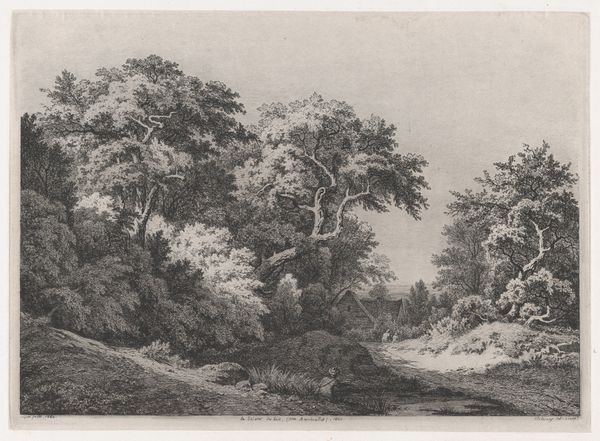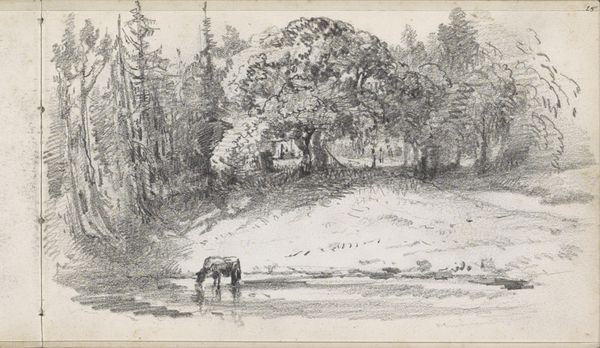
print, etching
# print
#
etching
#
landscape
#
romanticism
Dimensions: 120 mm (height) x 153 mm (width) (plademaal)
Curator: This etching by Vilhelm Kyhn, titled "Bakker ved en mose" and created in 1849, immediately strikes me with its density. The visual field seems meticulously filled. What’s your first impression? Editor: Melancholy. Despite the picturesque setting, the dense foliage and dark etching ink lend the scene a somber, almost suffocating atmosphere. The light seems trapped, doesn't it? Curator: Yes, notice how Kyhn has used cross-hatching and varying line weights to construct depth and texture. The strategic placement of the darker areas truly dictates the visual rhythm here. It pushes our eyes to move back towards the central figure. Editor: The figure on horseback seems almost an afterthought, doesn’t it? They are set far back in the image and appear to be heading deeper into the landscape. Curator: The visual isolation created through their position may act as a subtle reflection on the human relationship with nature, reflecting romantic ideas popular at the time. Editor: Undoubtedly. One sees echoes of the German Romantics such as Caspar David Friedrich, where figures within vast landscapes invite contemplation on the self and the sublime. And the use of light and shadow underscores that feeling of existential yearning. The small winding creek on the lower left looks more like a pool that will not find an end point. Curator: We shouldn't overlook the detailed rendering of the flora; each leaf and blade of grass is articulated meticulously, demonstrating command over the etching process. But one should consider what is in the fore, since there isn't a whole lot beyond foliage depicted. Editor: To my eyes, this abundance can symbolize nature's untamed power but perhaps also hints at mortality and life's ephemerality. All things in nature tend towards an eventual demise. Curator: Indeed, Kyhn presents us with an intimate engagement with the Romantic aesthetic— the use of stark tonality as well, only enforces a darker tone, reflecting cultural perceptions of landscape at the time. Editor: This piece reveals the potent blend of meticulous technique and symbolic language prevalent during the Romantic era. I am struck by the contrast of density and suggestion. Curator: Agreed, and understanding its structural components truly highlights how effectively it channels those emotions through considered graphic articulation.
Comments
No comments
Be the first to comment and join the conversation on the ultimate creative platform.
